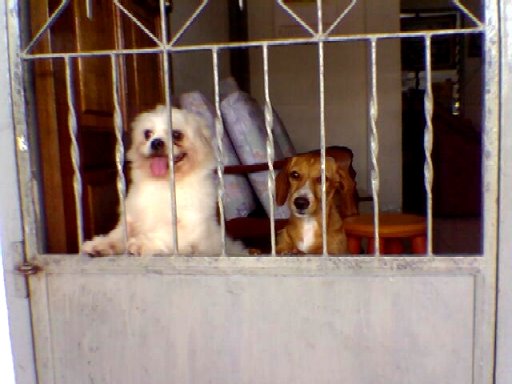The Scoop On Dog Houses
Dog houses are small shelters kept outside to
protect dogs from the elements of nature. They
assure that the dog is protected from heat and
cold and has plenty of water.
Dogs have been man's best friend since at least
the ancient days of Egypt. They were often pets
and hunting partners. In Egypt, they lived in
mud-brick kennels where they were trained. Dogs
were also known throughout ancient Greece, China
and Rome. Smaller dogs were often kept in the
home but nobility and those with the means or
necessity kept their dogs in their own houses
outside the home.
There are a few factors to consider when
selecting a dog house to purchase such as the
size of the dog, the size of the backyard and
the material and design of the house. Bigger
doesn't always mean better: the dog should be
able to enter and exit the house and lay down in
it comfortably. Houses that are too big can make
the interior temperature too hot in the summer
and too cold in the winter.
There are many types of dog houses. Many
immediately think of the typical house with a
peaked roof and arched doorway, but there is a
large variety available. The "typical" house
has a pitched roof and is the most popular
style. There are also single panel flat roofs
and loft roofs, which feature a sun deck on the
roof. Doors on these houses are useful for
temperature control. The houses can be made of
plastic, metal, fiberglass or wood. Plastic
ones are the easiest to clean, while the wooden
ones are the most traditional. Houses with
removable roofs provide easy access to the dog.
Some houses are portable and some are even
inflatable. Kennels refer to crates and
carriers used for travel. Also available are
dog tents and dog boxes. They all slightly
differ and are appropriate for various uses.
Some houses for dogs can be extraordinarily
lavish. Many are designed to look like villas,
mansions, palaces, castles, estates or almost
anything else. Some are hooked up to electricity
and feature lighting, furniture, heating and air
conditioning. Some may take things a bit far,
installing chandeliers, multiple floors,
moulding and tinted window treatments. Those
with the finances and the space can have as
lavish a home for their dog as they desire.
If pooch doesn't seem to be crazy about his new
house - even if it's luxury - there are a few
ways to remedy this problem. It's important not
to make the new abode seem like a place of
punishment. Being in the house should be a
positive experience. Put some of his favorite
toys or blankets in his house, or give him some
treats in his house. It should also be as close
to home as possible. Make sure that the house
isn't too large or small for the dog's size, as
well. If the dog still isn't crazy about his
new house, just give him time. He might just
need to adjust to it, especially if he is used
to being indoors.
Basic houses for dogs start at around $80 and
may go up exponentially depending on material,
add-ons, style and size.
----------------------------------------------------
Steven Barnhart is owner of Doowaggle a great
resource for custom dog houses, climate
controlled dog houses and other dog supplies
designed to enhance the life of your pet.
http://www.doowaggle.com/dog-houses
EasyPublish this article: http://submityourarticle.com/articles/easypublish.php?art_id=260260














.jpg)






.jpg)

0 comments:
Post a Comment